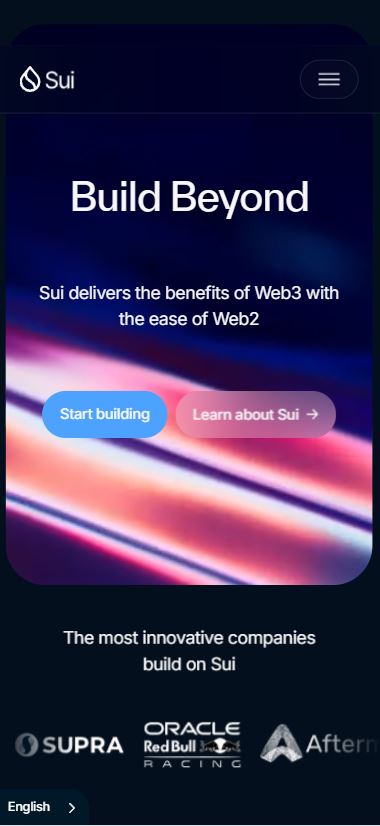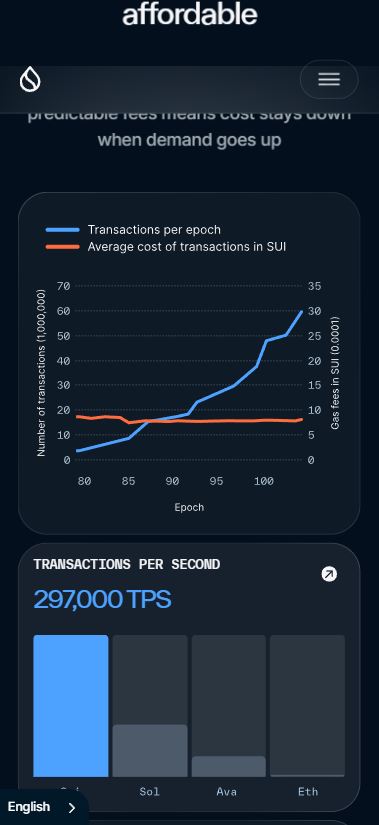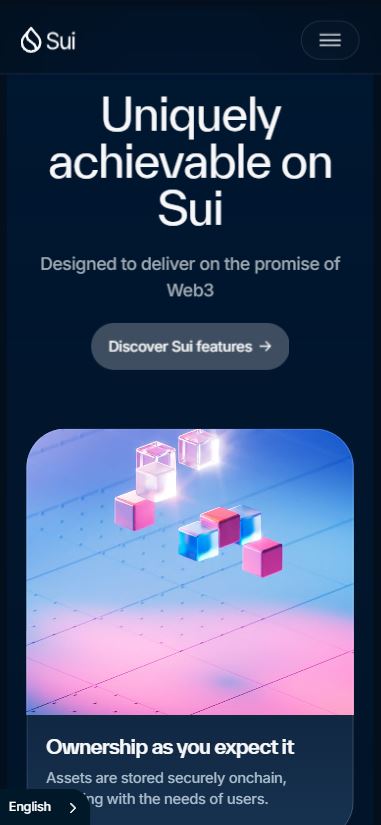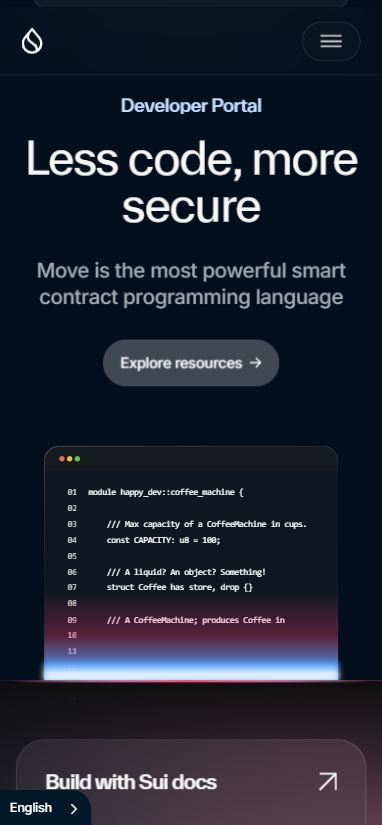About Sui (SUI)
Sui (SUI) is the native token of the Sui blockchain network, a permissionless smart contract platform designed to optimize digital asset ownership with features like speed, privacy, and accessibility. Built on the Move programming language, Sui introduces an innovative object-centric model that significantly enhances scalability, transaction throughput, and user experience.
The SUI token serves several key functions within the network, including governance, paying for gas fees, and participating in staking. The Sui platform aims to provide a low-cost, high-speed solution for decentralized applications (dApps), with the potential to support various industries, including gaming, finance, and digital asset management.
What is Sui (SUI)?

Sui is a Layer 1 blockchain platform designed to offer an unparalleled speed and scalability solution for decentralized applications. Its object-centric model enables parallel execution of transactions, providing sub-second finality for fast and efficient processing of digital assets. By supporting on-chain storage and utilizing the Move programming language, Sui aims to revolutionize how assets, including NFTs and other complex data, are managed and interacted with on the blockchain.
The platform’s unique features, including horizontal scalability and low-cost processing, make it highly suitable for high-speed applications, such as gaming, finance, and digital collectibles, while also enabling privacy features for users.
How does Sui (SUI) work?
Sui operates on several innovative principles that make it distinct from other blockchain platforms:
- Object-Centric Model: Sui organizes digital assets and data as objects, enabling developers to create more complex, scalable, and efficient applications. This model allows assets to be directly stored and updated on-chain, eliminating the need for Merkle tree indexing, which reduces costs and increases efficiency.
- Parallel Execution: Unlike traditional blockchains, Sui processes groups of transactions in parallel. This means that transactions do not need to be processed sequentially, avoiding bottlenecks and enhancing throughput. This parallel execution helps Sui achieve a high degree of scalability without compromising performance.
- Sub-Second Finality: Sui ensures that once a transaction is validated, it is finalized in under one second. This provides a high level of confidence in the reliability and speed of transactions, making it ideal for real-time applications like gaming, trading, and financial services.
- Sparse Replay: Sui implements sparse replay functionality, where the platform only tracks transactions that are relevant to a specific application or dApp. This makes querying on-chain data less expensive and allows developers to reduce operational costs by not needing to track irrelevant transactions.
- On-Chain Storage: In Sui, assets are stored as objects directly on the blockchain, making them easy to update, manage, and interact with. This approach improves efficiency and reduces the complexity of managing digital assets compared to traditional blockchain models.
What are the potential use cases for Sui (SUI)?
The unique features of Sui make it well-suited for a variety of use cases:
- Digital Asset Management: Sui’s object-centric design makes it an ideal platform for managing and transferring digital assets, including non-fungible tokens (NFTs), crypto collectibles, and other on-chain assets.
- Gaming: With its high-speed, low-cost transaction processing, Sui can support real-time multiplayer gaming, where transactions, in-game assets, and actions are executed and finalized almost instantaneously.
- Financial Services: The platform’s parallel transaction processing and sub-second finality make it a promising solution for high-frequency trading, decentralized finance (DeFi), and other financial applications that require fast and efficient transaction execution.
- Decentralized Applications (dApps): Sui provides developers with a powerful toolset for building decentralized applications that require scalability, speed, and privacy. The Move programming language facilitates the development of user-friendly applications, allowing developers to bring blockchain technology to a broader audience.
- Privacy-Preserving Applications: Sui’s architecture allows for the development of privacy-focused solutions, providing users with control over their data and transactions while maintaining a high level of transparency and security.
What is the history of Sui (SUI)?
Sui was contributed to by Mysten Labs, a company founded by a team of former executives and lead architects from Meta’s Novi Research (previously Facebook). The team includes notable figures such as Evan Cheng, Adeniyi Abiodun, Sam Blackshear, George Danezis, and Kostas Chalkias, who were instrumental in the development of Meta’s Diem blockchain and the Move programming language.
Sui’s development began with the vision of creating a highly scalable and efficient blockchain platform that could support digital asset ownership and high-performance applications. The mainnet is still in development, with the project continuously evolving and adding new features to address the demands of decentralized finance (DeFi), gaming, and enterprise-grade applications.
The platform switched to the Bullshark consensus algorithm in August 2022, which helped reduce latency issues and allowed validators with lower processing speeds to still contribute to the network. This was an important step toward improving the overall network’s accessibility and scalability.

























Reviews
There are no reviews yet.